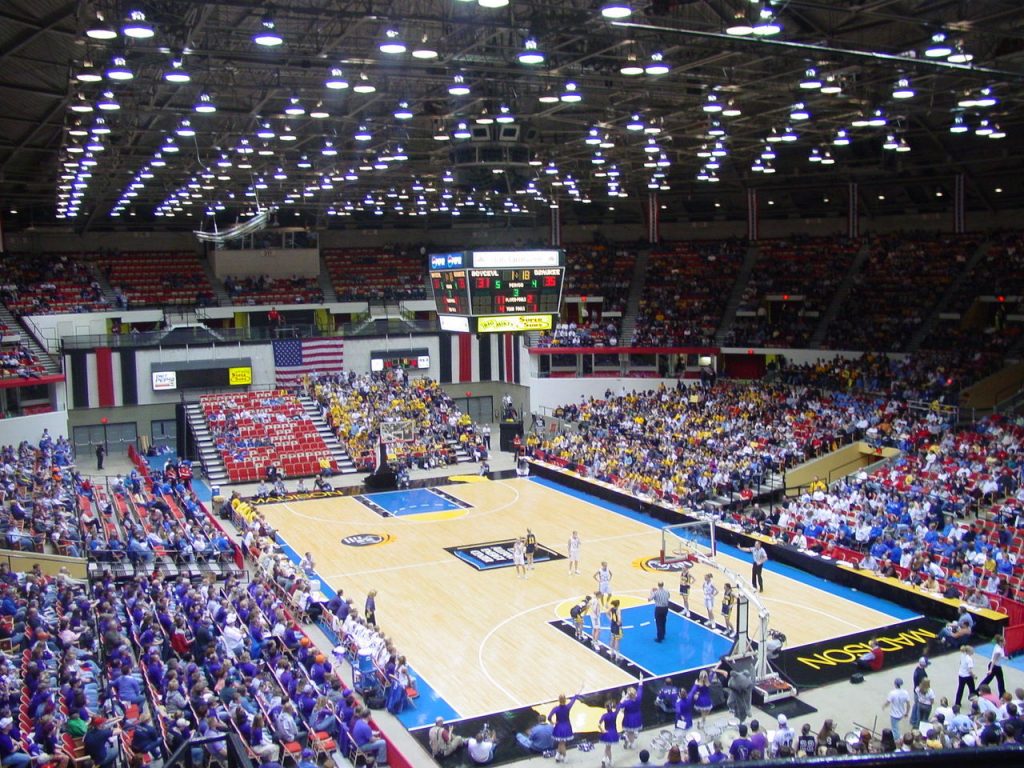
Welcome the Solar Powered Golden 1 Center
For an arena that will quickly play host to more than 17,500 fans nightly, the new Golden 1 Center doesn’t make a big impression. Sacramento Kings owner Vivek Ranadive might have likened his group’s brand-new arena to the Roman Colosseum, and it might be a much-needed cultural centrepiece for a city that frantically needs one, but the arena feels nearly modest in its proportions.
Except for exactly what’s underneath. Building on the Golden 1 Center began in October 2014 after the city combated successfully to keep the Kings in Sacramento. Ultimately Sacramento officials guaranteed $255.5 million to the task, which Kings president Chris Granger says will be a billion-dollar project in all. And a not insignificant quantity of that cash is approaching constructing what the group hopes will be the most highly innovative sports arena ever built.
In addition to the arena, teams are dynamic to construct a 16-story hotel, an open mall for dining establishments and stores selling basketball team uniforms, and a plaza on the 1.5 million-square-foot website in the dead center of the city. (If you search Google Maps, the Golden 1 Center is directly beneath the word “Sacramento.”) When it’s done, the group hopes the arena will seem like not simply a place for basketball however a space that’s woven into the fabric of the city– not just physically, however digitally.
The obstacle with building tech into a project as huge and pricey as a sports arena is that tomorrow’s advances end up being yesterday’s antiques. Ranadive and business have set themselves the powerful job of not just developing today’s most current innovation into the Golden 1 Center but producing a building versatile sufficient to adjust to what the future brings. That means developing an arena that does not simply have concrete at its core. It also has a clever system, which includes every part of the stadium, from the bare bones of the place, right up to the sustainable heat pump system.
Game day
One day this fall, here is the way Granger and his team hope you’ll spend your night. You unlock your phone, open the Kings app, and search for tickets. You purchase them (and a parking pass) in the app, which is connected to the group’s commitment program, so you’re automatically on the list for last-minute ticket upgrades. As you approach the arena, your phone rings; on your phone is an alert from the stadium telling you which parking lot is the simplest to park in today. You park, approach the arena, scan the ticket displayed on your smart watch and walk through the turnstile. Your app guides you to your seat and asks if you desire a hotdog or a foam finger. Attendants can bring either one to your seat in a couple of minutes. You’re late, but that’s fine; the app has replays and stats. Or you can just look up at the 84-foot (that’s foot, not inch) screen that’s thoroughly developed to make sure you can see it perfectly no matter where you are in the stadium. (Or out of the arena– more on that in a minute.)’ Every night, your Tesla updates. So we need to have that same viewpoint when it comes to our arena.
If you would rather just watch individual’s play basketball, says Kings CTO Ryan Montoya, that’s fine. Individuals experience games, performances, fights, beast truck rallies, and everything else through lots of various methods. However something’s consistent today: individuals want to stay linked. They want to send and get texts, snaps, Instagrams, and Ellos. The arena’s task is to allow those connections.
So they’ve run 650 miles of fibre-optic cable television and 300-plus miles of copper throughout the arena, and have actually put hundreds of Wi-Fi gain access to points around the structure. “A lot of systems– point of sale systems, building automation– a great deal of that gets moved to Wi-Fi due to the fact that it’s so reliable,” states Matt Eclavea, the group’s vice president of technology. There’s a 6,000-square-foot information center in the arena. Another giant room will house a monstrous DAS (dispersed antenna system) that will bring cell service to every nook and cranny of the building. The connection, the group states, will suffice to send 500,000 Snapchats per second.
Eclavea and his team have attempted at every turn to future-proof their system. “A great deal of idea goes into exactly what it’ll appear like in 5 years,” Eclavea says. “I wish to put it in now. It’s a lot much easier than dealing with sheet rock.”
He indicates two racks a few feet listed below the ceiling that run the length of a sporadic concrete hallway below the seats. These are for a difficult variety of cable televisions– not just now, however even more years from now. When I ask what does it cost? Bandwidth he anticipates a capacity will utilize when the arena opens, he holds up his thumb and forefinger, almost touching, and squints through them. Eclavea states Golden 1 Centre’s setup has enough headroom for 10; even 20 years of innovation prior to anything could possibly overwhelm their network. They’re dealing with advanced Wi-Fi requirements like 802.11 a/c, as well as really bleeding-edge ones like small cell networking. “A great deal of these are not even commercially available,” Eclavea states. Given that Qualcomm chairman Paul Jacobs is an investor in the group, which Ranadive made his fortune in software application and analytics, it’s not unexpected that there’s a constant drive toward the next thing.
Around Golden 1 Center, almost everything– from the turnstiles that let people in the building right to the lines outside the bathrooms, and not to mention that 84-foot screen– is connected in some way, feeding streams of data back into the system. From a central command center in the bowels of the arena, a group of staff members will sit at a bank of 20 approximately screens and view everything that’s taking place everywhere. They’ll have the ability to reroute people to much shorter lines, stream live basketball videos to fans’ phones, and run sales on merchandise when basketball shorts just aren’t flying off the racks. Ultimately, a sufficiently quick network might even make Golden 1 Center a perfect house for new type of events.
“We want to be able to host e-sports, drone racing, and stuff like that,” Montoya says, “and for that you require a great deal of bandwidth.” He discusses how he’s seen Tim Cook and others bungle demos because of bad Wi-Fi at press events and extend an invite. “They can come here and introduce an item, and it’ll work.”
The City’s Arena
Beyond the enormously torrent-friendly Wi-Fi speeds, Granger seems most happy with the arena’s eco-friendly initiatives. He wishes to be the first-ever stadium accredited LEED Platinum, the market’s greatest recognition of ecological friendliness. For starters, Golden 1 Center is entirely solar-powered: panels will cover the roofing, and Sacramento’s 300 days of sunlight will provide 15 percent of the essential power and solar hot water for the stadium. The rest will originate from a local solar farm. To conserve water, they’re setting up low-flow toilets. They’re cooling the arena from underneath rather than with huge air-conditioners in the ceiling. (One awesome benefit of that function: Granger states eventually each section will have the ability to set its own temperature by voting in the app.) Arena kitchen areas will source nearly all their food from suppliers less than 150 miles away. Don’t worry, you’ll have the ability to get nachos, they’ll simply be farm-to-table nachos. The Kings wish to ready Sacramento residents, creating a building that represents individuals inside.
Even what it means to be “inside” is a complex concern at Golden 1 Center. The whole facade is embellished with little holes that make the building itself feel like a canopy of trees. Huge hangar doors– made by Schweiss Doors, which are similar in design as the Elon Musk’s SpaceX hangars— will fold up at the front of the arena so that anyone outside can see all the way into the stadium. Big, angled windows jut out of the sides of the arena.
“The whole idea is anywhere you are outside, you can see inside,” Granger states. “And anywhere you are inside, you can see outside.” They’re currently talking with artists about exactly what it means to play a concert for the fans both inside and outside the arena. What can you do with the two 25-foot LED screens simply outside the front doors? Or the nearly 600 other screens throughout the building? No one knows the responses, since no one’s ever had this much tech to have fun with previously.
The Self-Updating Stadium
The “highest-tech stadium” is an award that nobody ever gets to hold for very long, however, the Kings are certainly going to get it for a while. Prior to beginning deal with Golden 1 Center, the Kings crew toured a number of others, like nearby Levi’s Stadium and Amway Arena in Orlando. Both are brand-new, extremely connected arenas, and the Kings wished to outdo both. More bandwidth, more servers, better infrastructure. They desired a larger screen than the 160-footer in Dallas Stadium, too, however NBA standards wouldn’t allow it. Although, Montoya states happily, his is higher-res: 32 million pixels compared with 25 million in Dallas. Take that, Jerry Jones.
The team still has great deals of concepts, even as we walk through the building and construction site. The very best aspect of making so much of the arena’s performance based on software is that they can update it later on without having to build anything physically brand-new. Right now, after many years of wrangling and a few of building and construction, the clock’s ticking on Golden 1 Center. No, there’s literally a clock, ticking down to the moment Paul McCartney hits the stage on October Fourth. When I initially meet Montoya, he rattles off that he has 127 days left like it’s the only number he can consider. That’s 127 days delegated develop an arena that will last for decades. That will just get better gradually. “Let’s take a look at Tesla,” Ranadive informed his team a while earlier. “Every night, your Tesla updates. So we have to have that same philosophy when it comes to our arena: each night, the arena updates and improves itself.”
If all of it works, most fans will never even think about the technology. They’ll simply can be found in, quickly discover their way to their seat, and delight in the video game in any low- or modern way they please. Then they’ll go house delighted, complete, and foam-fingered, and Granger, Montoya, and Eclavea will sleep soundly.

